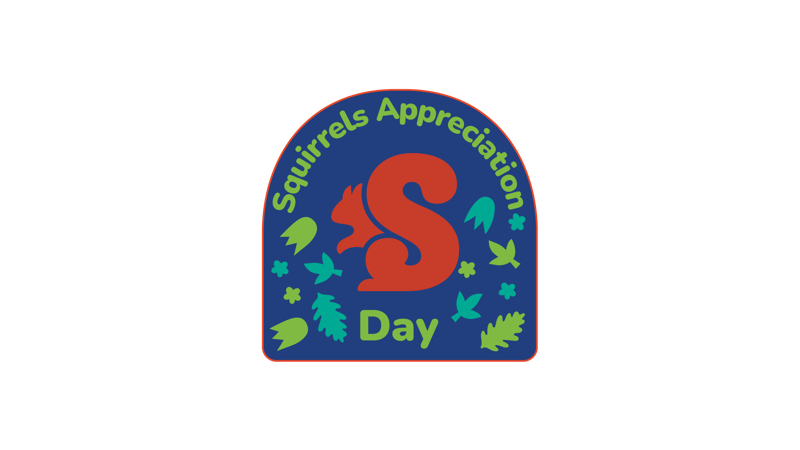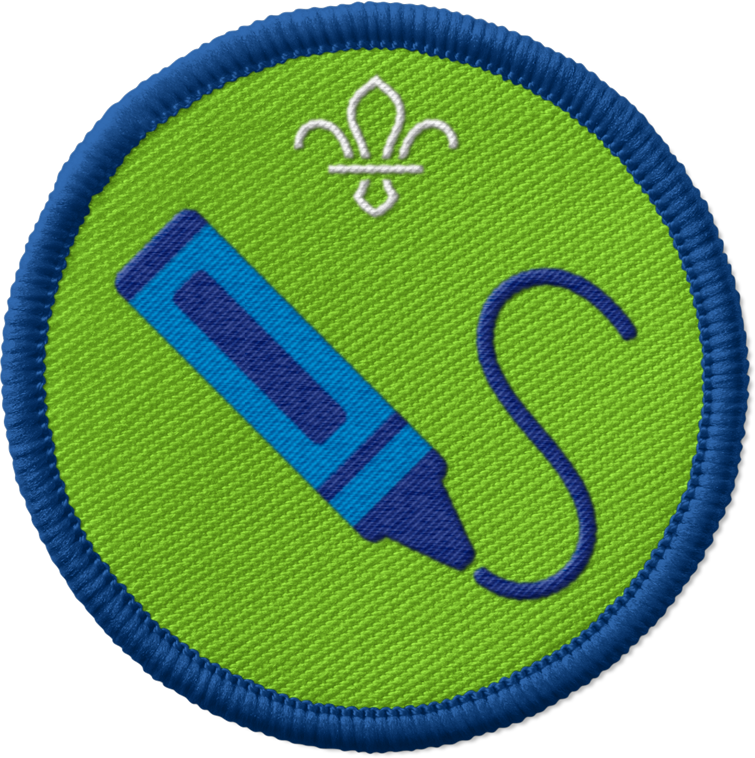
Pine cone squirrels
You’ll need
- PVA glue
- Natural materials (for example, leaves, twigs, feathers)
- Coloured pens or pencils
- Scissors
- Pine cone
- Googly eyes and buttons (optional)
- Felt
- Craft pipe cleaners
- Feathers or craft faux fur (optional)
Before you begin
- Use the safety checklist to help you plan and risk assess your activity. Additional help to carry out your risk assessment, including examples can be found here. Don’t forget to make sure all young people and adults involved in the activity know how to take part safely.
- Make sure you’ll have enough adult helpers. You may need some parents and carers to help if you’re short on helpers.
- You could do this activity for Squirrel Appreciation Day on 21 January and get your paws on a fun badge from Scout Store.
Getting ready for this activity
- Plan how you’ll collect your pine cones and any other natural materials you’d like to use. If you can, see if everyone can join in as part of the activity. You may want to consider collecting or purchasing (if out of season) pine cones if you don’t have access to trees around your meeting place. Remember that cones are generally found between September and December.
- You might want to make or find a picture of a pine cone squirrel before the session, as an example. You could also take along a picture of a squirrel for inspiration.
- On this page, you can find instructions for one way to make a pine cone squirrel. You might want to cut out the felt shapes, for the faces, feet, hands and tails, before the session.
- Put out all the equipment for decorating the pine cones.
Choose your pinecone
- Everyone should start by sitting in the circle.
- Have a look at and talk about the pine cones. Who knows what they are? Where do they come from? When do you see them? Pine cones grow on pine trees. They’ve seeds hidden inside them. In autumn, the pine cones fall to the ground. When it’s warmer and easier for things to grow, they open and release their seeds.
- Some animals and birds eat the seeds from the pine cones. Squirrels use their strong, sharp teeth to chew them and get the seeds from inside the cone.
- Explain that today everyone will be creating their own squirrel from a pine cone.
- Ask everyone what they think they’ll need to add to the pine cone to turn it into a squirrel. They could add eyes, nose, mouth, ears, feet, hands and a big bushy tail. You could show an example you made earlier or a picture of a squirrel for inspiration.
- Everyone can choose their pine cone and get ready to make their pine cone squirrels.
Make your squirrel face
- For the face and ears, draw a small circle onto the felt, then add two triangle shapes on the top of either side of the circle. To make your circle, you could draw around the bottom of a glue stick, or something else.
- Carefully cut out the face shape.
- Stick on your googly eyes, or draw on some eyes.
- Use a coloured pen to draw on a nose. You could also glue on a black button for the nose, too.
- Put some glue on the back of the squirrel face and stick it on the top part of the pine cone.
Make your squirrel back paws (feet)
- Draw two little sock shapes onto your felt, and cut them out.
- Stick the feet onto the bottom of your pine cone.
Make your squirrel front paws
- Draw two small paw shapes onto your felt. They could be semicircles.
- Carefully cut out the paws.
- Stick the paws onto the front of the pinecone, sticking them around the middle of the pinecone between the face and the paws.
Make your squirrel tail
- Ask everyone what do squirrel’s tails look like? They’re big, long, fluffy and curved. Their tails can be nearly as long as their bodies. Make a tail from pipe cleaners or feathers or faux fur. You could also use leaves or draw your squirrel tail onto felt.
- Put some glue on what you’re using to make the tail and stick it onto the pine cone.
- If you’re using pipe cleaners, bend them in half and try to thread the ends in between the pine cone scales, adding a blob of glue on the ends to secure them in place.
- You may need an adult to use a hot glue gun and stick all the tails on, depending on the material chosen. They should be left to dry and cool down before being given back to young people.
Share your creations
- Once completed, everyone can show off their creations.
- Everyone should be careful, as the glue might still be drying.
Reflection
This activity encouraged everyone to get creative in making their own pine cone squirrel. Being creative gives people the opportunity to be independent and make their own decisions. Did everyone enjoy creating their own squirrel? Was there anything anyone found tricky? Did anyone help someone else make their squirrel? What other animals could you make from pinecones or other things you find outside?
Safety
All activities must be safely managed. You must complete a thorough risk assessment and take appropriate steps to reduce risk. Use the safety checklist to help you plan and risk assess your activity. Always get approval for the activity, and have suitable supervision and an InTouch process.
- Scissors
Supervise young people appropriately when they’re using scissors. Store all sharp objects securely, out of the reach of young people.
- Glue and solvents
Always supervise young people appropriately when they’re using glue and solvent products. Make sure there’s plenty of ventilation. Be aware of any medical conditions that could be affected by glue or solvent use and make adjustments as needed.
- Visits away from your meeting place
Complete a thorough risk assessment and include hazards, such as roads, woodland, plants, animals, and bodies of water (for example, rivers, ponds, lakes, and seas). You’ll probably need more adult helpers than usual. Your risk assessment should include how many adults you need. The young people to adult ratios are a minimum requirement. When you do your risk assessment, you might decide that you need more adults than the ratio specifies. Think about extra equipment that you may need to take with you, such as high visibility clothing, a first aid kit, water, and waterproofs. Throughout the activity, watch out for changes in the weather and do regular headcounts.
- Gardening and nature
Everyone must wash their hands after the activity has finished. Wear gloves if needed. Explain how to safely use equipment and set clear boundaries so everyone knows what’s allowed.
To help develop their skills further, give everyone the opportunity to write a small story about their squirrel and read out aloud.
The felt shapes could be cut out before the session, or people could be involved in drawing and cutting these.
People could use a pen to add extra details, such as a nose and whiskers on the face, or lines to make the feet/hands look like paws.
For those groups who’re unable to leave their meeting place or have no access to a wooded area, items can be collected prior to the session by young people or volunteers. You could also use ones sourced from craft shops.
If anyone needs help or struggles with using scissors, give them the opportunity to work in pairs, with a young leader or an adult volunteer to cut out the felt shapes. They could also be pre-cut for everyone before the session.
All Scout activities should be inclusive and accessible.
Why not encourage the young people to take their squirrels home, or maybe these could be used to ‘sign’ the squirrels in at the start of each session? You could use spare pine cones to make bird feeders in the autumn or winter.
People can decide what they want to use to create their own squirrels.

